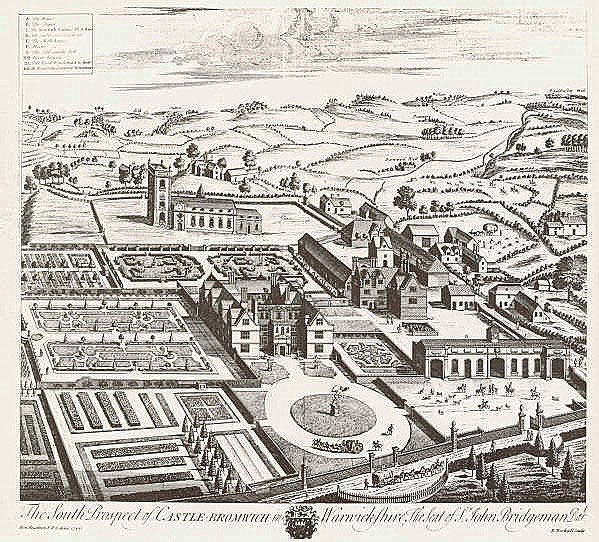
An Historical and Descriptive Sketch of Birmingham (1830)
Castle Bromwich Hall is a Jacobean manor built c. 1599. Over the next decades, more stories were slowly added on until the late Georgian era, when the Bridgmans became the Barons of Bradford (1792).

The History, Topography and Directory of Warwickshire (1830)
The earldom was first created in 1694 and became extinct on the death of the fourth early in 1762. It was revived in 1815 for the second Baron of Bradford. Castle Bromwich Hall was not the family seat, which was actually in Staffordshire (Weston Park). It appears it was empty for several decades:
An History of Birmingham (1809)
No doubt, it would have attracted passerbys travelling on “three great roads” to marvel at such a well situated home.









